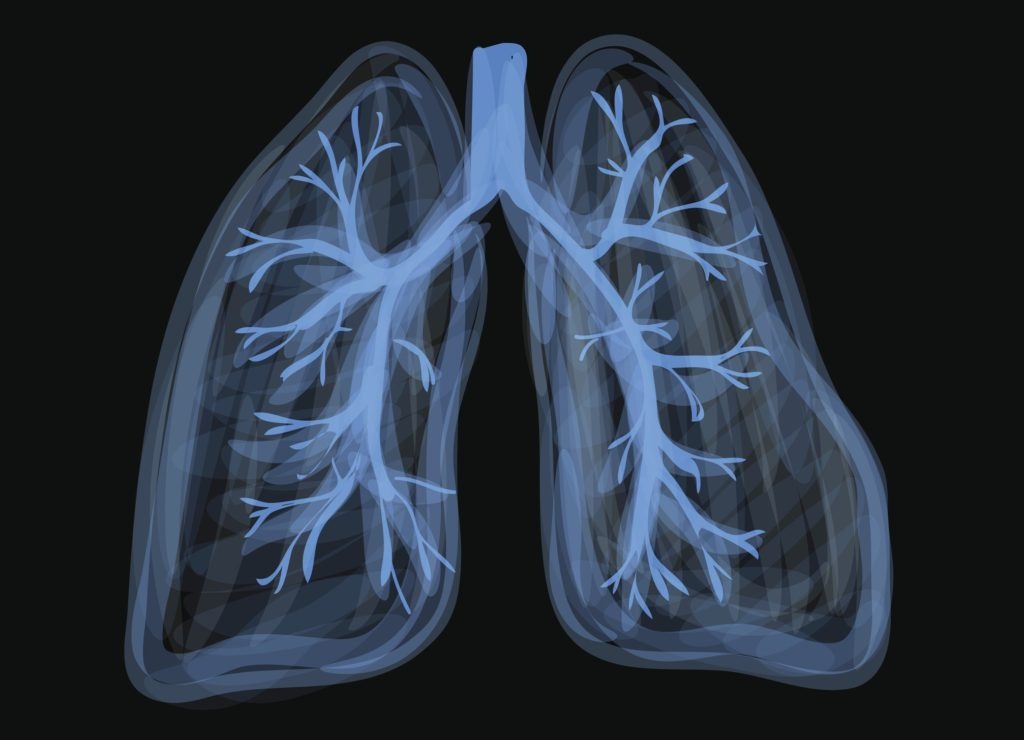
Overview
The way that we breathe is crucial for helping us to regulate our emotions. Whether we are aware or not, because of the feedback-loop that exists between our bodies and minds, the way we breathe can either activate (agitate) or de-activate (calm) our body and mind (!). This page aims to explain and demonstrate Soothing Rhythm Breathing, a quick (but very powerful) way to self-soothe and support yourself through difficult experiences.
By slowing down our mind and body, Soothing breathing helps us to have more choice over how we can respond to internal and external sources of stress. Many clients report that this breathing technique is one of the most helpful emotion-regulation skills that they learn in therapy.
Why is Soothing Breathing Important?
Soothing breathing is an essential emotion regulation skill. We know that certain types of breathing can speed our minds and bodies up: Breathing into the chest rapidly can increase our arousal and (in some people) may even trigger a panic attack. Other types of breathing can slow us down and can provide a sense of calm, safety, and soothing. Soothing breathing can short circuit our brain’s ‘fight-flight response’. This slows our mind and bodies down, which helps us have more choice over how we would ultimately like to respond.
Soothing breathing works because it stimulates our vagus nerve and this increases our Heart-Rate Variability (HRV), a marker of our body’s ability to respond effectively to stress. This activates your brain’s soothing system and is an essential skill if you want to improve your ability to self-regulate (i.e., to handle stress, and difficult emotions such as anxiety, anger, sadness or panic). So, soothing breathing can help you to feel relaxed and gain focus and by supporting your mind and body.
When we experience stress, our breathing rhythm changes from slow to quick. The depth of our breath also changes from deep in our stomach (diaphragm) to shallow in our chests. Breathing quickly in our chest stimulates our sympathetic nervous system (‘fight / flight response’). It activates our physiology and increases our heartbeat, muscle tension, and can contribute to the activation of our mind’s threat system.

Because of the body-mind connection, the physiological and psychological effects can become a feedback loop between our body and brain that amplifies and raises our arousal level beyond what is needed for a given situation. In this state, we become reactive, flooded by stress chemicals, and preoccupied with protecting or attacking. Clearly, this severely limits our peace of mind and reduced our ability to make wise choices.
When we are not aware of our breath, because of this feedback loop, chances are that when under stress our breathing will become rapid and shallow. This activates us and makes us more susceptible to stress via alertness, physical tension, racing thoughts, agitation, and/or rumination. For certain people, this can even cause a panic attack!
If you are feeling mentally agitated, stressed, or are struggling with difficult emotions – or if you are someone experiences panic attacks – you will benefit greatly from learning to self-regulate and soothe yourself by slowing your breathing using the following steps…

Soothing Rhythm Breathing (SRB) – How to do it:
Note. Although soothing breathing is not dangerous (we actually breathe this way when we are in deep sleep), some people find that they become anxious when focusing on their breathing. If this happens to you, and you would like to be free of this (or any other) issue, I recommend you consider working with a Clinical Psychologist who will be able to help you understand the origins of your difficulties (and the ways forward) so that you can benefit from being able to self-regulate and soothe yourself when distressed.
Also, it might be stating the obvious, but I caution you against doing this while doing exercise – we have different oxygen requirements at these times.
Step 1 – The Mechanics.
First, we need become aware of how to breathe into our diaphragm (our belly). This means sending the air past our chests, to our bellies. This allows us to stimulate our vagus nerve, which stimulates our parasympathetic ‘rest & digest’ system (which is the opposite of the threat-focused ‘fight/flight’ system).
There are two easy ways to do this: Either sitting on a chair or lying down. If you are seated, please sit upright, place your feet on the floor and gently arch your lower back (this makes your tummy accessible). If you struggle with self awareness, I recommend using a mirror. Alternatively, you could try lying on your back, legs bent with feet flat and your buttocks lifted an inch or so (this allows you to breathe straight into your diaphragm). Then move on to the following…
Place one hand on your chest and the other on your belly. When you inhale, try to bypass your chest and send air to only your belly (the hand on your belly should move, while the hand on your chest remains still). When you exhale, the hand on your belly will move towards you.
Tip: Practice makes perfect – You can use a mirror to check you are doing this correctly.

Step 2 – The Rhythm.
We need to S L O W your breathing down. This can be anything that works for you. A common rhythm is 6 breaths a minute.
Try the following and then experiment with what is most soothing for you:
Take a slow deep breath in. Fill up your tummy. No need to overdo it (we don’t want to cause dizziness), just inhale until you become comfortably full. HOLD IT for 2 seconds. Exhale slowly over 6 seconds.
A: Repeat – Gently inhale to your tummy comfortably over 4 seconds.
- Count “In, 2, 3, 4”
B: Gently hold your breath for 2 seconds
- Count “HOLD-IT, 2”
C: Slowly exhale over the entire duration of 6 seconds.
- Count “Out, 2, 3, 4, 5, 6”
Repeat from ‘A’ five times. In total this will take you 60 seconds. Notice how you feel….
That’s it – that’s all there is to it! Now – notice how you feel – Simple isn’t it? And it only took 1 minute! – Imagine how calm you could feel if you did this 10 times (i.e., for just 2 mins)?
The great thing about this breathing is that once you know how to do it, you don’t need to use your hands on your chest or belly. You can do it subtly, whenever you need to soothe yourself and no-one will know that you are doing it (after all, we are ALL already breathing !).
Now you can practice anywhere: Lying in bed when you can’t sleep, waiting for a bus or train, when on ‘hold’ or in a meeting, standing in a line waiting to be served, or waiting at the traffic lights etc…
Initially, I recommend practicing this technique regularly (3x day) to help you develop awareness of how you are breathing, and how it feels to slow your breathing down and tap into your soothing system. You can combine this breathing with other relaxation activities, mindfulness, or guided imagery (such as those listed here).
Now you have a powerful tool that you can draw upon to help yourself self-regulate when the going gets tough and you need to calm yourself and focus in times of stress.

The Purpose of Practice
Initially, I recommend that all my clients practice this breathing for 2-3 mins at least 3x a day and I recommend that YOU do the same (eg, in the morning, and several times throughout the day, whether you need it or not). This means that you will be well-versed at cultivating a sense of calm in the absence of any triggers. If you don’t practice, you will probably forget what the counting is, or even forget that this type of breathing is even an option that you can draw upon in times of stress.
The more you practice like this, the better your awareness will become of your breath and you will also be benefiting from a reduction in stress while doing your practice. Once you understand the mechanics and are able to induce a sense of soothing, you will then be ready for when you actually DO need it (eg, stress, anger, agitation, anxiety, stress, panic, self-criticism, or any other challenging emotion or situation…).
Be realistic
A common mistake I see clients who are still learning this breathing is to try to use it to conquer a situation that causes them a 10/10 level of distress (!). Please be realistic – Until you have practised this several times a day across multiple contexts, you are not ready to make use of any skill for highly stressful situations (after all, that would be like learning how to jump over a hurdle once or twice and then expecting that you can compete at the Olympics !).
Although this breathing is essential for situations that cause 10/10 levels of distress, if you do not have this breathing at a level where you can do it while standing at a set of traffic lights (or while engaged in other non-threatening activities), what makes you think you are going to be able to do it when highly distressed? So, if possible, practice often (and across multiple contexts) so you can gain experience and confidence using it to soothe yourself in increasingly difficult situations.
Develop awareness and intervene early! Don’t wait until you are really stressed, worried, or are having a panic attack or a level of 10/10 in distress. Although sometimes these difficulties are unavoidable (the breathing will help), it is unlikely to give you the drastic benefit you are looking for… It is always best to intervene early and combine the breathing with other skills, such as unhooking from negative thoughts, and engaging with your 5 senses, before you are at level 10/10 in distress.
In sum, build awareness of your body, awareness of your stress levels and the need to soothe yourself, and develop the ‘muscle memory’ of soothing breathing by practicing until you know what you need to do, so that when next in a difficult situation the benefits of soothing breathing are fully available to you.

Supercharging your SRB
There are several things that you can do to increase the relaxation-effect of this exercise that involve deliberately using a specific tone of voice, altering your facial expression and deliberately using specific postures with your body. This works, because we know from research that how we talk to ourselves (the tone of voice we use) and how we use our intention to provide warmth, support and ‘care’, can drastically improve our experience of calmness. It can also be useful to combine calming imagery (e.g., a calm/safe place, or your favourite colour that you associate with healing) with soothing breathing to enhance the effects of both helpful tools.
Try this:
In your mind, using a warm, gentle and an encouraging tone, substitute the counting for the phrases: ‘mind slowing down’ (as you inhale) and ‘body slowing down’ (as you exhale). We know that posture and gestures form part of the body-brain feedback-loop, and so sitting with a gentle half-smile or adopting a caring posture that you use for others can be helpful additions that can increase the calming effect of this breathing. Alternatively, you may like to use a physical gesture, like placing your hands over your heart, as a reminder to give yourself loving attention (mindfully place one hand over the other and place them both on your chest or heart feeling the warmth as you direct this warmth and care to your chest).
These are essentially ways of providing feedback to your mind and body that ‘everything is OK’ (or the message from yourself, to yourself, that ‘I am here with you’). Many new psychotherapies make use of this way of working, and are supported by extensive research. If this style of working with yourself appeals to you, further things you can do to supercharge the calming effect of this exercise can be found from your own experience of ‘caring for others’ E.g., What tone of voice do you use? – What do you feel in your body ? – How do you feel when you are reaching out to offer support to others ? You can experiment with copy / pasting some of these things onto how you are hold (or relate) to yourself while doing this exercise. Because of the mind-body feedback-loop, adding these things can add impact to your ability to soothe yourself in times of need.
It is common for people to find it difficult to soothe themselves or to ‘be with’ certain emotions without feeling overwhelmed. The reasons for this are completely understandable and often relate to our developmental history and our emotional learning. Therapy can help you make sense of these difficulties, and can provide an opportunity for you to learn how to cultivate a more self-compassionate (vs self-critical) stance. In this way, you will be better equipped to deal with difficult emotions, and will be better able to work towards meeting your needs and improving your situation. If you would like to learn more about emotion regulation (how to soothe yourself when distressed), take a look at some of my other resources listed below.
Summary
- Soothing Breathing is a powerful way to support your mind and body that can increase your ability to tolerate difficult emotions. This can reduce reactivity and can increase your capacity to make better choices when distressed.
- Soothing breathing is completely safe. It makes used of the fact that by stimulating the Vagus nerve in our diaphragm (which has branches that run to our heart and our brainstem), we are able to put a ‘brake’ on our sympathetic (‘fight-flight’) nervous system which brings into balance our parasympathetic (‘rest & digest’) nervous system
- The positive effects of soothing breathing can be enhanced when combined with safe / calming imagery (or visualising healing colours), caring physical gestures, and by using a warm, soothing inner voice.
- Although soothing breathing is not dangerous (we actually breathe this way when we are in deep sleep), some people find that they become anxious when focusing on their breathing. If this happens to you, and you would like to be free of this (or any other) issue, I recommend working with a Clinical Psychologist who can help you understand the origins of your difficulties (and the way forward) so that you can benefit from being able to self-regulate and soothe yourself when distressed.
- It is common for people to find it difficult to soothe themselves or to ‘be with’ certain emotions without feeling overwhelmed. I can help you make sense of these difficulties and can provide an opportunity for you to learn how to cultivate a more self-compassionate (vs self-critical) stance. In this way, you will be better equipped to deal with difficult emotions, and will be better able to work towards meeting your needs and improving your situation.
Further Resources:
- Heart-Rate Variability (HRV) and your mental health.
- What is Mindfulness ?
- Emotion Regulation: Understanding your Window of Tolerance
- How childhood attachment experiences affect you and your relationships
- Your brain’s 3 Emotion Regulation Systems
- Fears, blocks, & resistances to Self-Compassion
- Getting Past Your Past with EMDR Therapy
- How to get the most out of therapy
- A list of all articles that I have written
If you are having difficulties with soothing yourself during times of stress, anxiety, or panic, or if you are struggling with something else – I can help you better understand yourself and others. I can help you free yourself from difficulties, get in touch with what is truly important, and can help you to learn ways to respond differently to your situation so that you can move towards living a life that is truly meaningful.




